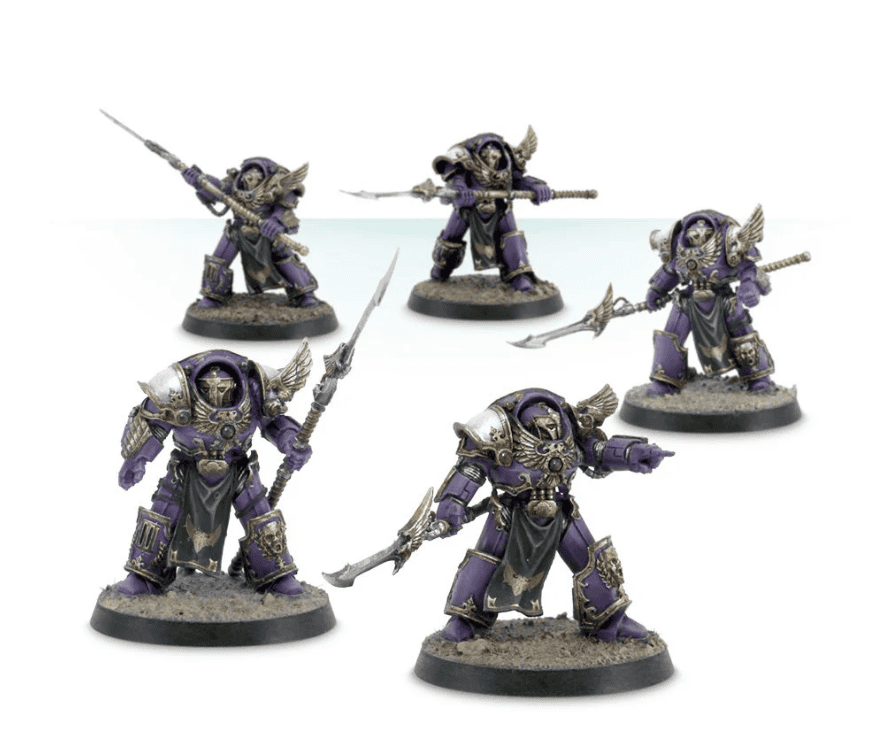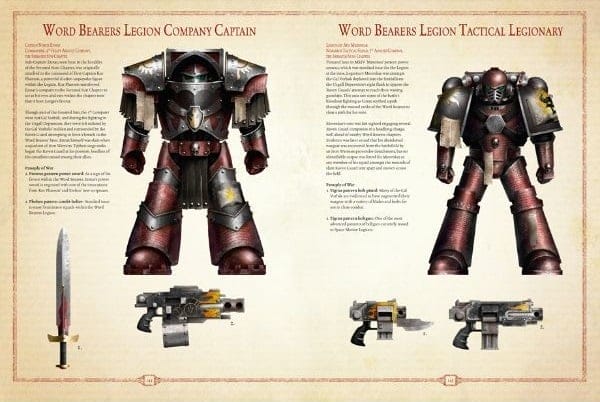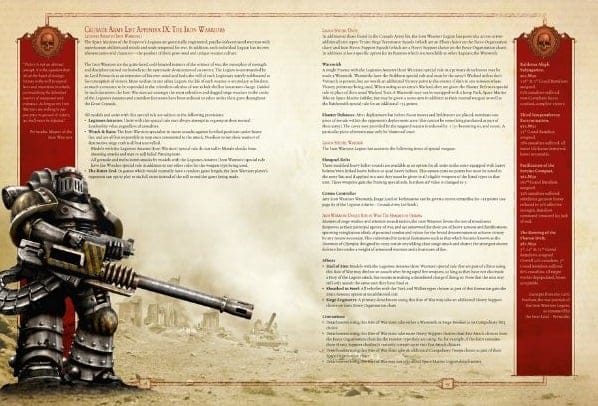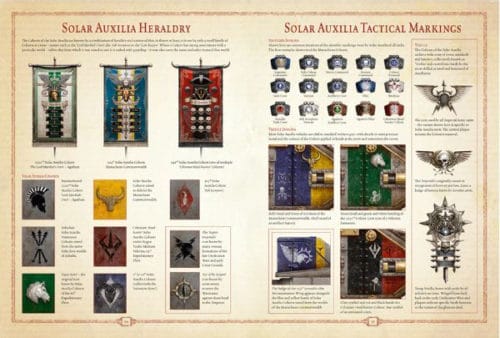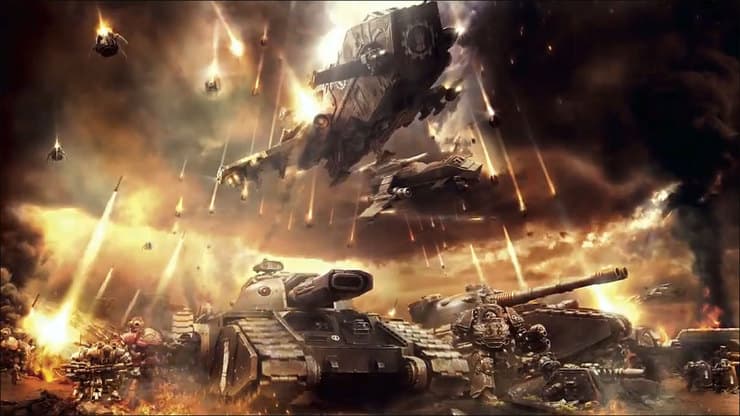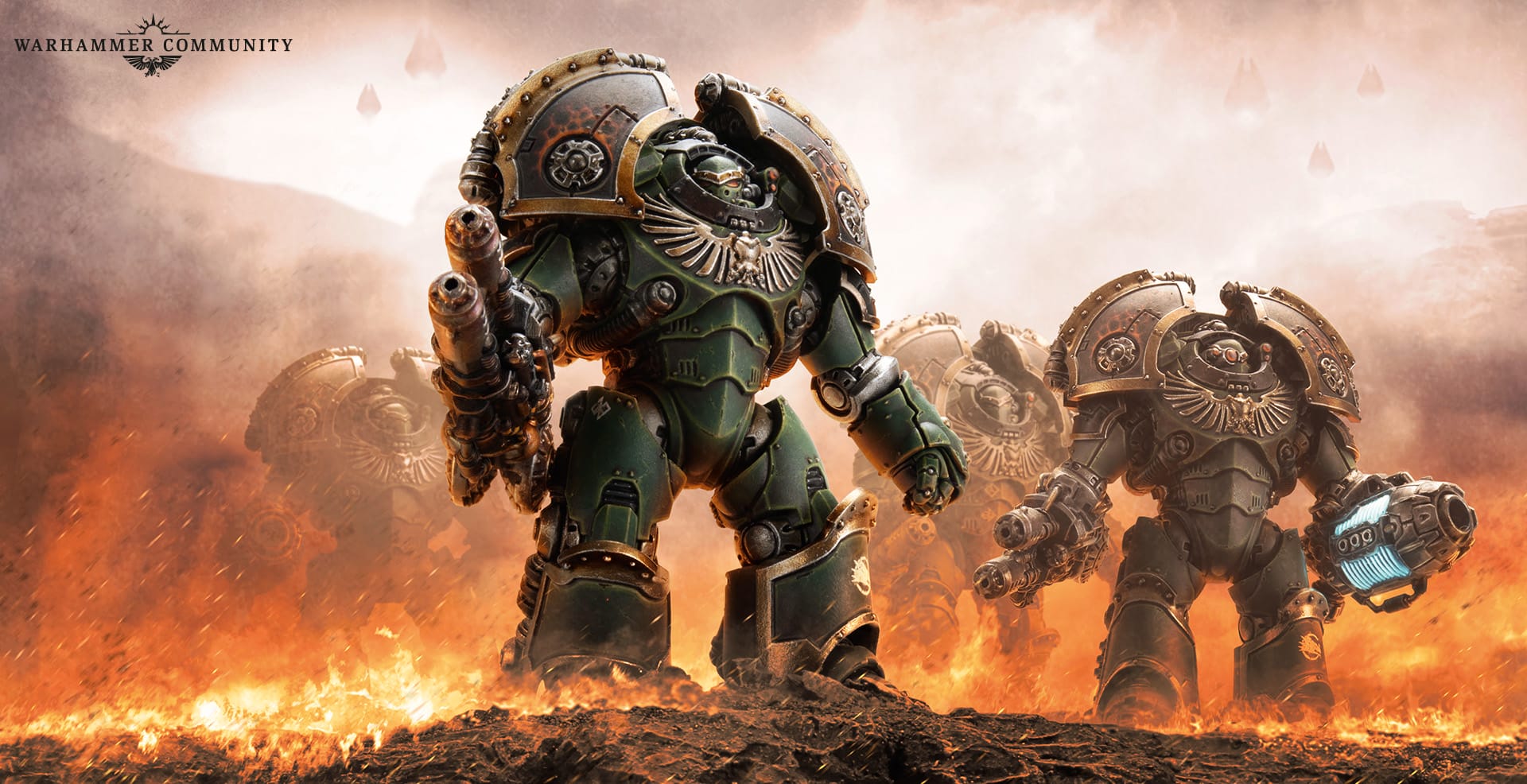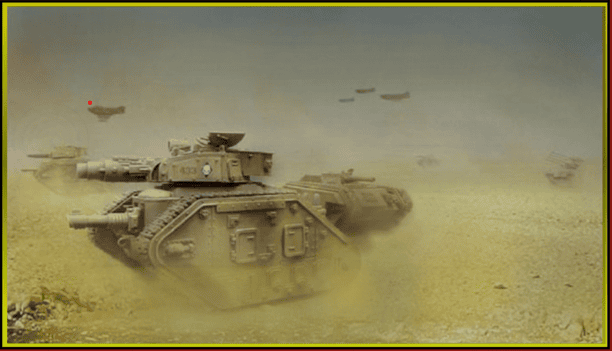What exactly were the 'Black Books'?
The Origins of the Heresy on tabletop...
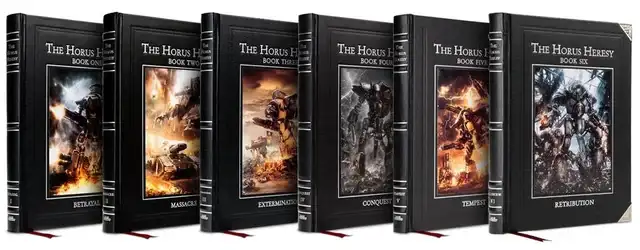
You’ve possible heard of the Black Books. Maybe seen them referenced. Today we dive into what exactly they were, and why they mattered.
Introduction
Long ago, in the halcyon days of 2012, the ForgeWorld visual feed (their intermittent youtube channel) began displaying teasers for a new set of rules for Warhammer 40k - the Horus Heresy. Previously only seen up until this point in lore snippets and the Black Library novels, this new publication from the famed sister studio of GW heralded the beginning of a whole new game system.
As was typical for ForgeWorld at the time, the publication of these rules was not in the form of paperback codexs (like it Warhammer 40k or Warhammer Fantasy) but instead in larger hardback tomes. In the case of the heresy the production team went all out, symbolising the importance of this product, and gave us the ‘Black Books’. A4 sized, bound in pressed black leather and metal corner protectors (thus producing the name), with high quality paper and full colour art throughout, these pieces were the paragons of the high quality that ForgeWorld was known for at the time.
But that was 12 years ago now. And a lot has changed, both to the Heresy and to the way the rules have been published. Many new players will have never seen a Black Book in person, let alone used it. So this article today is a brief summary of what exactly they were, and maybe why you should try and find one (or a PDF equivilent).
The Layout
The Black books were each focussed on a specific conflict or sphere of combat from the heresy, with the first being Istvaan 3, with 2 and 3 covering Istvaan 5 and the battle of Phall. With that in mind, each book followed a similar format.
- Firstly the book detailed the events of the conflict in question. Typically including a degree of context and buildup. This would often also detail a variety of both big picture and niche actions from within the combat sphere. And the odd relevant anecdote.
- Secondly it would go into the history and organisation of the forces involved in that conflict. I.e. For Book 1 - Betrayal, the book contained a summary of the extended history of the III/VII/XII/XVI Legions. This also often included brand new lore on their pre-heresy roots, organisation, named heroes, and legion cultures. In many cases this dramatically expanded on the hints and tales from the Black Library novels.
- Next it included a Campaign. A series of staged battles that players could use to refight the events of the book. Picking key moments or stories that stand out from the story. For example the moment Angron drops onto the planet!
- Finally the rules. In almost every Black Book there were new units, factions, legions, or equipment to be implemented into the game, and the last section of each black book was dedicated to conveying all of this to the players, including weapons references and statlines. Yes this did make playing some forces quite a bit of weightlifting, as some new Legion Characters and rules were implemented in later books to their initial rulesets (I.e. Emperor’s children were in Book 1. But their Phoenix Guard and Spears were Book 2)
The Narrative Style
As previously mentioned in a prior article ( ) the Black Books are written as a ‘Pseudo-Historical’ document. Including opening statements that imply it has been written by remembrancers to the best of their ability.
This had two amazing benefits. Firstly for the narrative team, it allowed them to explain vast quantities of as-yet unwritten lore about the Legions in a straightforward and detailed manner. Whilst in the novels this kind of information may come across as dry or exposition heavy, in these historical retellings they provided perfect context that also fleshed out much of the non spotlight figures in the Great Crusade and heresy. Importantly its also through these Black Book summaries that we have found out almost all ‘official’ lore surrounding the founding of the Legions and the operations of the Great Crusade.
The second benefit of telling the narrative in this way, was it left elements open. Warhammer has always been a setting where ‘your dudes’ could be slotted in anywhere and still (within reason) fit. The Heresy narrative in these books was an open setting, with plot holes, mysteries, and elements left for the reader to wonder what happened. Whilst they did give great detail on key elements, the unreliable narrators (the remembrancers) and the intentional leaving of some details, allowed players to insert their forces within the wider narrative without upsetting canon. For a game based on a ‘historical’ setting, this was incredibly well done. Examples of this could be seen all over, things like - not naming every III Legion Lord Commander, being ‘unclear’ of the sheer number of Alpha Legionaries in operation, emphasising repeatedly that almost every legion failed to follow one element of the Principia Bellicosa or other at some point (emphasising how your forces did not need to adhere to the strict in-universe rules of organisation), and more.
This also stretched to loyalties; and the books narratives, especially for the more ‘broad’ stories in Books 4 and 6 that covered several worlds, repeatedly left opportunity for both loyalists and traitors of every force and side. Despite what some members of the community may think, every legion had members that sided with the opposite to their primarch. From lone, ignored, Imperial Fist garrisons on the wild edges of space, to devout sons of Lorgar who refused to repent their former views. Its something that is still emphasised even now with the new Warlord traits!
Overall the narrative of these books were really strong. They told a fixed story from start to finish, and went into enough detail to really immerse a player into a new legion ’s culture and ideals. Giving plenty of ideas for new armies, customisation, and colour schemes!
Rules
As mentioned, until the rules summary books came out (duly titled the ‘red books’ by note of being red. Yes we are an inventive lot), the only way to access the rules of the heresy were through the black books. Each one typically introduced the rules for playing two or three legions (or four in the first couple), with a mixture of special rules, equipment, characters and units.
This method of rules release was in the norm for Forgeworld at the time. Typically an Imperial Armour book would contain some new characters and units for existing 40k factions, and then maybe a new army list for an existing faction (such as the Elysian drop troops, or Eldar Corsairs) that took advantage of the new units and rules they had designed for that campaign. This slow release allowed for each of the legions to be really characterful. With a lot of bespoke rules for each force. Typically each Legion had two or three positive special rules, one or two flaws/restrictions, and then access to one or two Rites of War. Then on top of that, they would have characters who also had special rules that could modify the army’s special rules, or add new units to the roster.
However all this detail and flavour did come at a cost, there physically was not enough space to write out the rules for every legion right from the off. And as the books were being released along the narrative of the Heresy, certain legions (the White Scars, Dark Angels, and Blood Angels) had to wait a little while before seeing actual Legion rules. Now there were workarounds put in place (including some barebones rules released with the ‘Red Books’) but the assumption was with one or two Black Books a year (forgeworld’s standard output) it wouldn’t be long past 2016 by the time everyone had full rules and characters. this was not to be. Although the effects of this are best saved for another time.
On top of Legion rules, and new armies. Each book also contained rules for fighting a story campaign based around that book’s conflict. These were often narrative heavy, asymmetrical, battles that pitted players into trying to refight and re-decide the fate of the Heresy’s key moments. From campaigning across the black sands of Isstvan, to purging the Prosperine pyramids, players were treated to all manner of deployments, objectives, and situational modifiers. This would also include the phenomenal Zone Mortalis ruleset, which threw forces into the cramped corridors of void warfare. Honestly if you take nothing from the early editions of the heresy, then please take a good look at the mission designs, because there is an absolute wealth of untapped potential narrative fun to be had there.
One final comment about the rules. Whilst they were all about making character for the Legions, they weren’t always as stereotypical as you would think. Many legions had special rules that only benefitted in certain circumstances, and created interesting narrative balances between forces. Their characters were often a mixed bag, and whilst some were well known Black Library favourites, others were brand new - representing faces of the Legions that had not been talked about before. Alongside these was a clear message to players, that some of their narrative darlings were already represented in the rules, and did not need special characters. Yes I am talking about Lucius/Azkelleon/Forrix/Delvarus etc. Go out and convert one, it would probably be cooler anyway!
Art
A final major asset of the Black Books, was the art. This was something that all of Forgeworld’s book were incredibly good at, and something that really helped to seel the ‘pseudo-historical’ nature of their publications. Just like any non-fiction boook about a military conflict, the Black Books contained oodles of full colour art that tended to fall into two categories:
- Firstly the many full page spreads showing Legionary armour schemes, weaponry, vehicles and heraldry. These were absolutely crucial for helping to provide references for colour schemes and ideas with the various new legions. It gave players plenty of amazing inspiration, and a great starting point for any new players to understand how these forces looked during this period (rather than just mimicking their 40k schemes and designs). This extended to the absolutely superlative pieces for each character that were strewn throughout the rules pages. It also really displayed a level of care the team and the artists had for the universe, and for capturing the essence of each legion in their designs and art.
- Secondly the ‘photographic’ style pieces that typically displayed scenes from the battle or conflict of the book. These were painstakingly edited images of actual models, displayed to look like in-universe photos and pictures. Again a staple of Forgeworld’s book design, this once again helped to sell the ‘realism’ of the conflict, whilst also showing off the many sculpts, models, and conversions the team had worked on for that book. Across many of the rules pages, these ‘photos’ provided background images displaying the unit in question, so new players could quickly understand exactly what they were looking for model-wise.
In both cases, this was also at a time where GW did fully credit its artists, and even let them out during open days to display new and upcoming pieces. Their work really cemeted the feeling and ‘reality’ of the stories in the Black Books, in many cases showing off all the new goodies without looking like a model catalogue (looking at the many 40k codexes…). Again if you get the chance, try and find some of their work and celebrate their talent!
Conclusions
All in all, I hope for new players this little piece begins to explain a bit about the Black Books. And in particular why they are often spoken about with some degree of reverence, and why they cost so much damn money on ebay. Whilst their rules are out of date, their artwork and lore is still very much canon, in all cases having been written in tandem with the Black Library team. And whilst they absolutely had issues, they are a part of the hobby this author sorely misses.
If you own one - cherish it, if you don’t - see if you can find a PDF. It’ll be worth it I promise!
(Yes I know GW are trying to re-create the same vibe with the Campaign books like ‘Siege of Cthonia’, but it doesn’t feel quite the same. We can live in hope though!)

